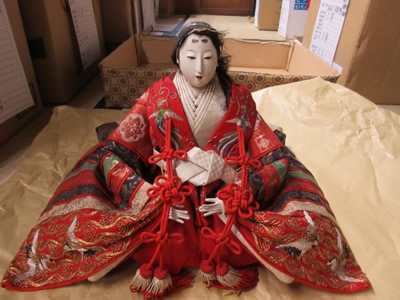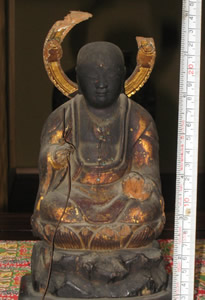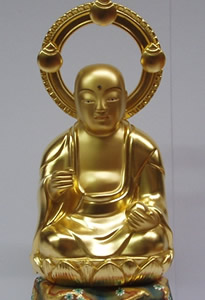Work Content
表具作業
表具とは、和紙、糊、布地などを材料とした日本の伝統的な紙工芸です。襖、屏風、掛け軸には、表具の技術が用いられています。
Hyogu is a traditional form of paper craft from Japan, in which the main materials include Japanese washi paper, glue, and fabric. The techniques of hyogu are used in the making of Japanese-style sliding and folding screens, and hanging scrolls.
The Most Common Hyogu Techniques
表具の主な技術
裏打ち Urauchi
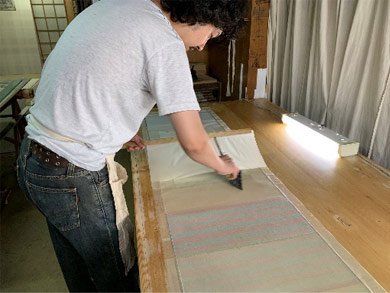
和紙に糊を付けて紙や布に貼り付ける技法。裏打ちをする事で、作品を良い保存状態を長く保つことが出来ます。
Urauchi is the technique of creating a backing by gluing a piece of paper or cloth to the washi. An urauchi backing will allow a work of art drawn on washi to be kept in excellent condition for a long period of time.
打ち刷毛 Uchibake
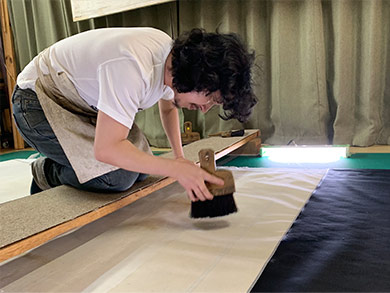
裏打ちをする際に、適材適所の糊の種類や濃度を使いこなす技法。どのような状態で保存を考慮しながら素材同士を上手くつなぎ合わせます。
When the glue is applied during the urauchi process, the artisan takes care to apply the right type, in just the right concentration, to just the right locations. Using an uchibake or "pounding brush," the artisan skillfully binds the materials together, all the while keeping in mind the conditions in which the work of art is going to be kept.
仮張り Karibari
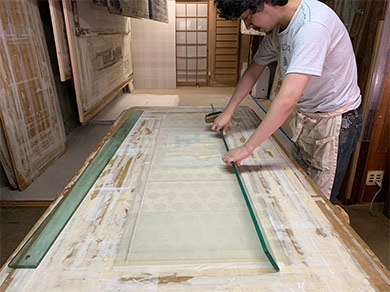
裏打ちした作品を水で引いて伸ばし、板状のモノに張る技法。仮張りをする事で、表裏の和紙が十分に融合し、紙を真っ直ぐな状態に保つことが出来ます。
Karibari is a technique in which a work of art that has an urauchi backing is treated with water, which allows it to be stretched and affixed to a flat board. This facilitates the proper adhesion of the front and back pieces of washi, and allows the paper to be kept in an upright position.
修復する表具の技術 Hyogu Techniques for Restoration
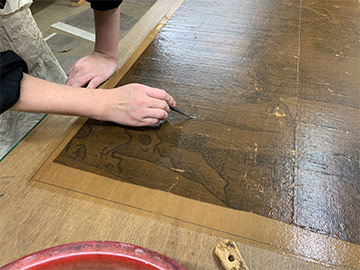
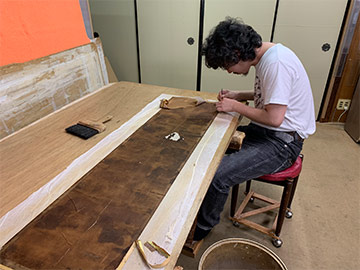

古い掛け軸や屏風、額などを修復し再生することも表具師の大切な仕事です。湿気や雨染みによるカビやシミの洗浄、掛け軸などの折れや割れ、元裂を使用した締め直し、屏風や襖などの本紙を洗って現状復元など、修復と修理を行っています。
One of the important tasks performed by hyogu artisans is the repair and restoration of items such as antique hanging scrolls, folding screens, and picture frames. We provide repair and restoration services including the removal of mold and stains caused by moisture and precipitation, the repair of folds and cracks in items such as hanging scrolls, the retightening of paper works with the use of repurposed and restored cloth from antique hanging scrolls (a practice known as motogire), and the cleaning of the washi sections of items such as traditional Japanese folding and sliding screens.

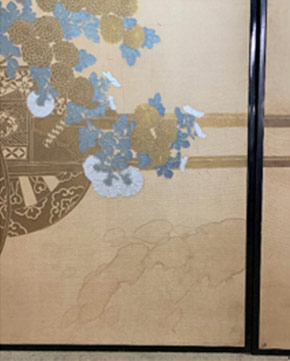
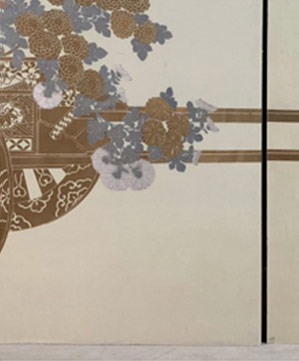

Introduction
実例紹介
亀裂の「墨跡」
’亀裂の入った「墨跡」の洗い修復’
- 症状
- 紫外線による「焼け」と和紙の劣化による「亀裂」
- 作業
- 薬品で洗浄後、亀裂部分の繋ぎ合わせをする。欠損部分は補彩による修復を施す。
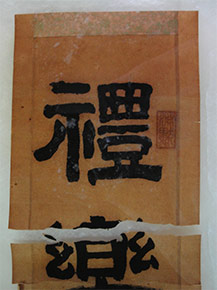
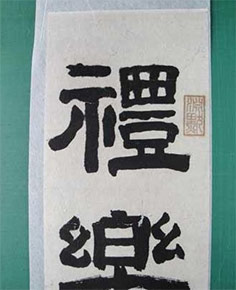
雨染み「墨跡」
’雨漏りによる「シミと墨跡の滲み」’
- 症状
- 掛け軸を巻いた状態(桐箱無し)での雨漏りによるシミ、カビ、墨の滲み
- 作業
- カビの種子を撲滅させてから薬品による洗浄。墨跡から滲み出た墨の洗浄。
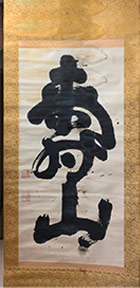
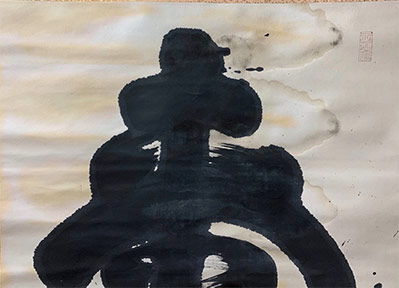
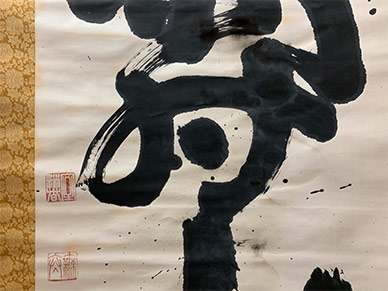
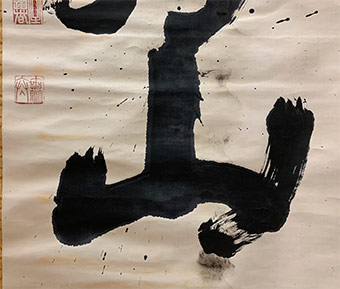
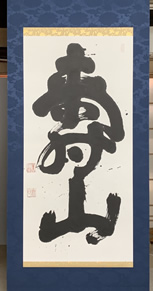
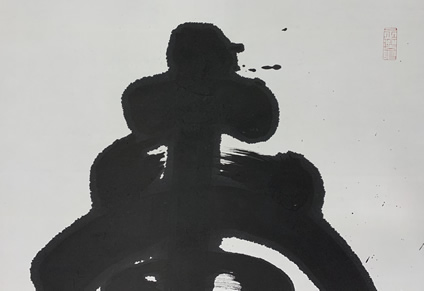
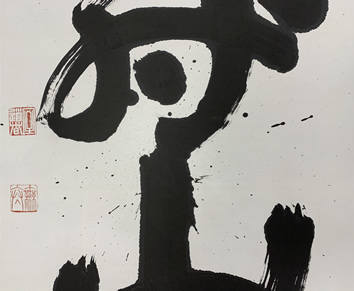
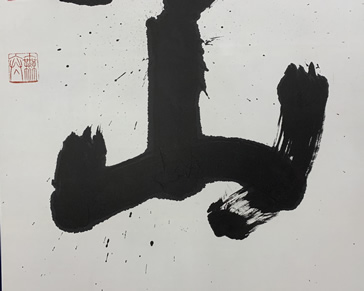
「御名号」洗い補彩
’「御名号」洗い補彩’
- 症状
- 本紙の紫外線による損傷と欠損
- 作業
- 本紙の洗いを施し「欠損」部分の補彩
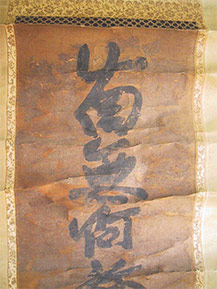
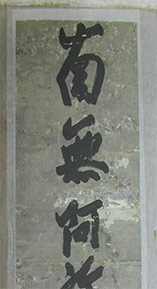
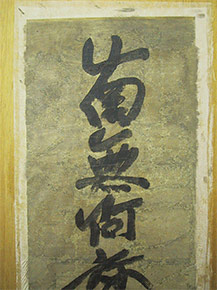
「聖徳太子」色差し
’「聖徳太子図」補彩’
- 症状
- 絵の具の剥落がひどく「お顔」の表情もわかりにくい。
- 作業
- わずかに残る「絵の具」を頼りに補彩を施す。全く色の判断が出来ない個所はその時代の書物を参考に補彩
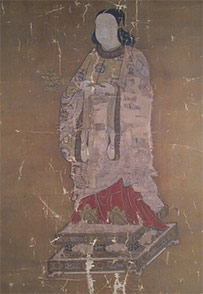
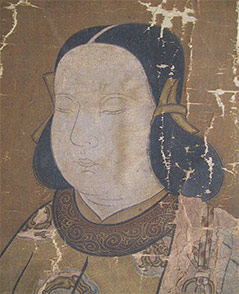
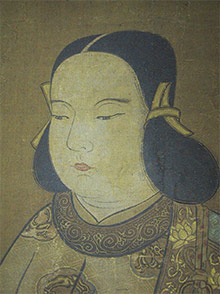





「涅槃図」修復
’「涅槃図」修理修復’
- 症状
- 掛け軸収納時に落下し「釈迦」部分に折れ損傷
- 作業
- 本紙の裏打ちを剥がし新しく和紙で裏打ちを施し折れた部分の補強修理
裂の劣化もあり表具は新調(総縁:4丁復元織り 中廻し:本金 一文字:本金)
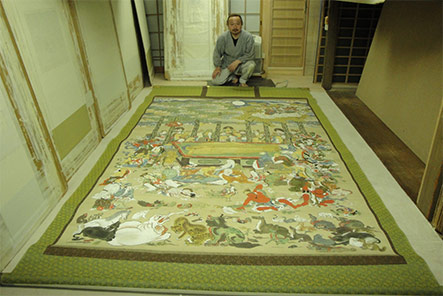
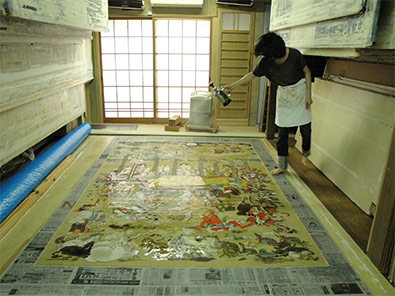
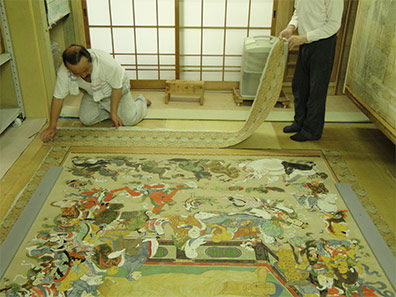
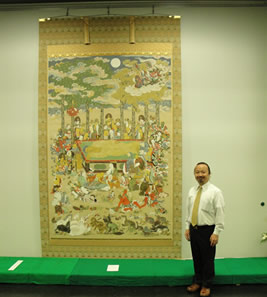
「洗い」例
''「洗い」例’
- 症状
- 「襖」「掛け軸」「色紙」などのカビ、シミによる変色
- 作業
- 症状に合わせた薬品による洗浄
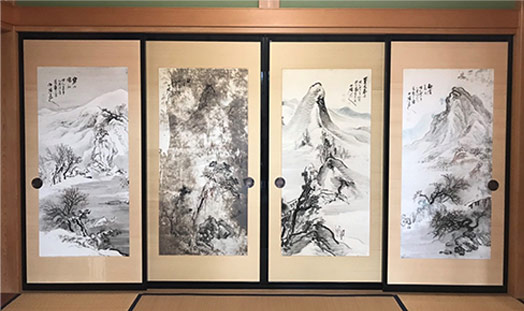
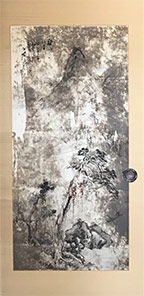
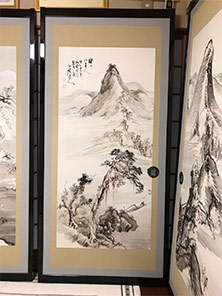
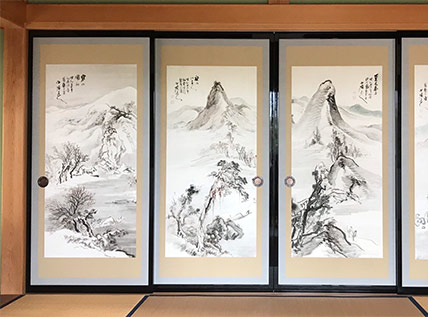
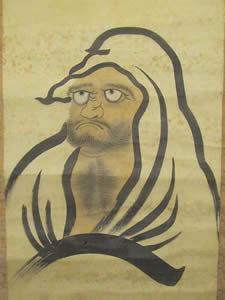
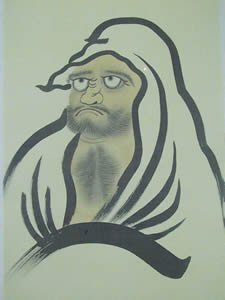
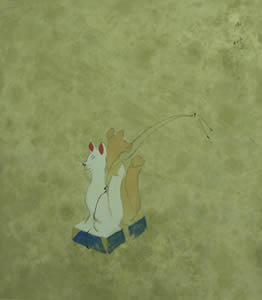

「襖絵」修復
''寺院「襖絵」洗い修復’
- 症状
- 「襖」の破れ、シミ、縦あわせによる擦れによる「絵」の損傷
- 作業
- 薬品による洗浄の後、補彩、画き起こし
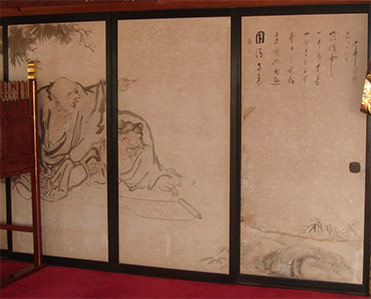

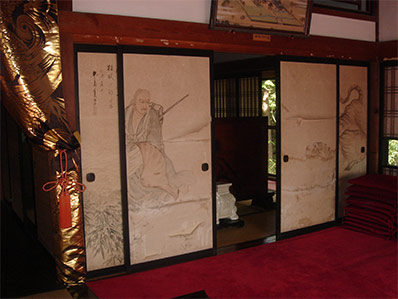
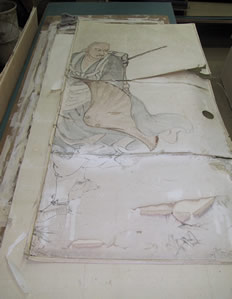
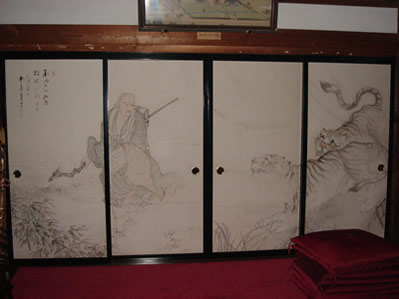
「巻物」
''「巻物」修理'
- 症状
- 巻物の継ぎ目の剥がれ
- 作業
- 剥がれ部分のつぎ直し後「仕立て直し」
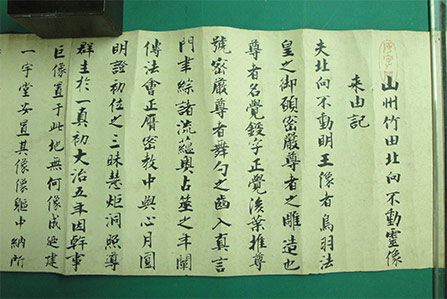
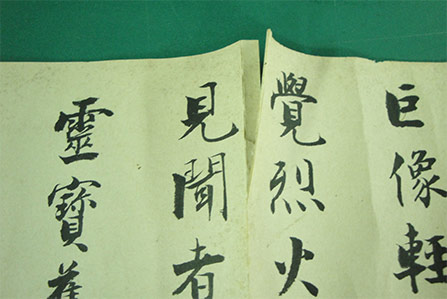
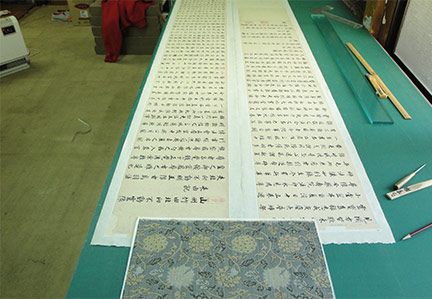
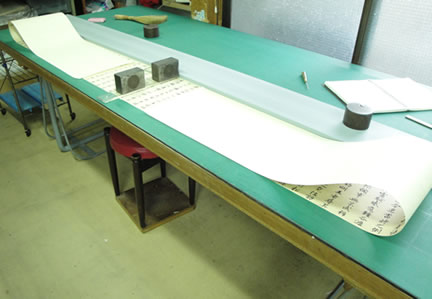
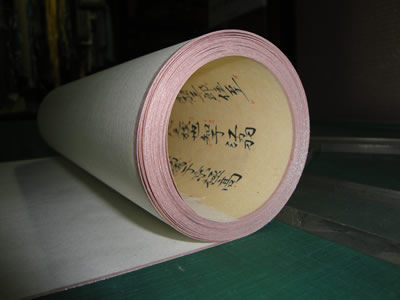

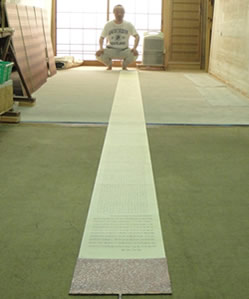
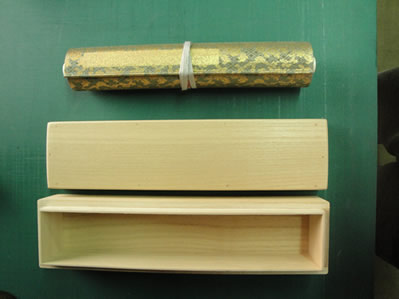
「画帖」修復
''「画帖」洗い修復'
- 症状
- 寺院の火災時、消火による損傷とシミ
- 作業
- 一枚一枚剥がし「裏打ちを」施し薬品による洗浄
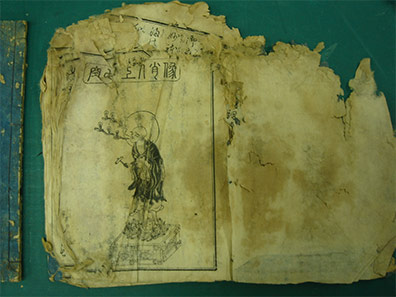
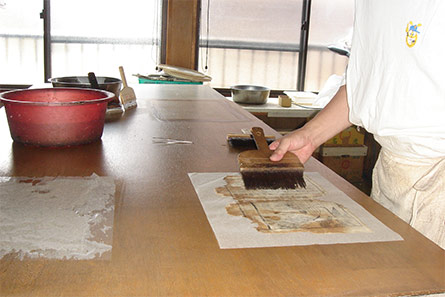

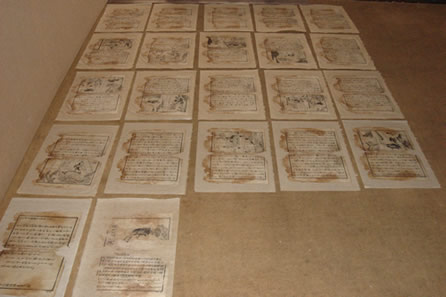
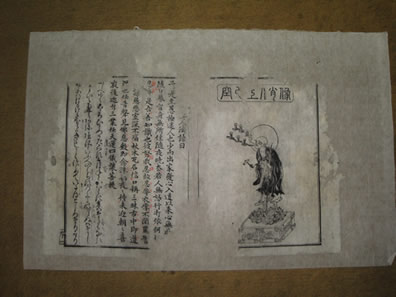

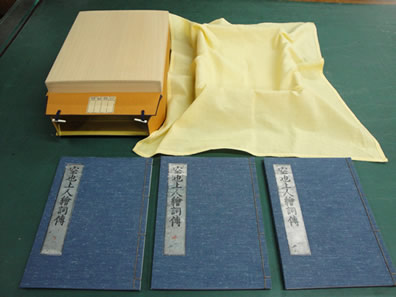
「火事」損傷
''「火事」による消化などでの損傷'
- 症状
- 個人宅の火災による損傷と消化液によるシミ
- 作業
- 薬品で洗浄後「本紙上部」の絵絹部分を欠損部分に移植
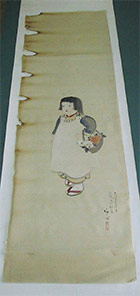
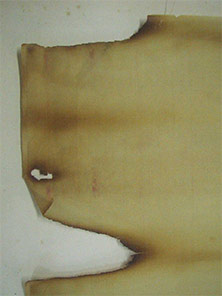
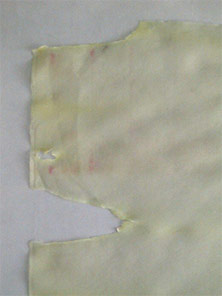
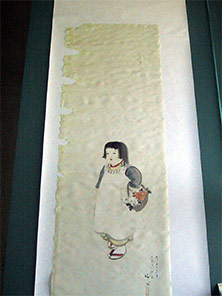
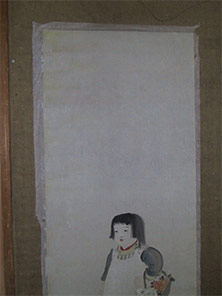





「折れ修理」
''「折れ修理」例'
- 症状
- 掛け軸の経年劣化による「折れ」
- 作業
- 折れた部分の裏から細く薄い和紙で折れに沿って補強

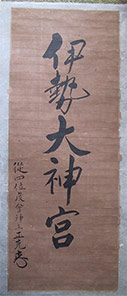
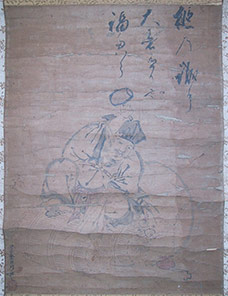
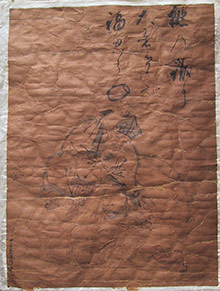


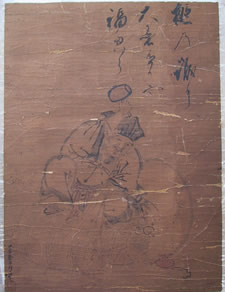
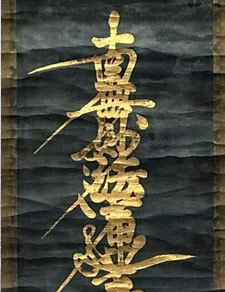
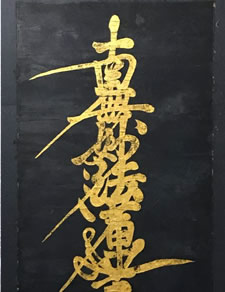
「両界曼荼羅」
''「両界曼荼羅」修復'
- 症状
- 掛け軸の経年劣化による「本紙の損傷」「激しい折れ」「絵の具の剥落」
- 作業
- 欠損部分の再現、本紙絵の補彩、激しい折れの修理
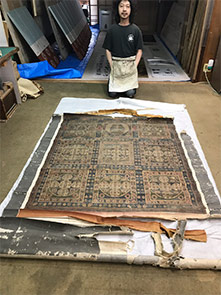
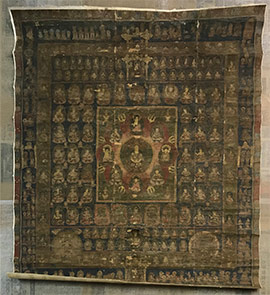
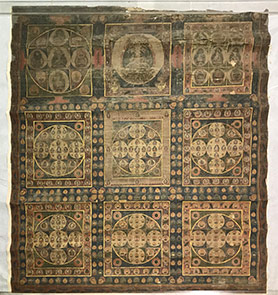
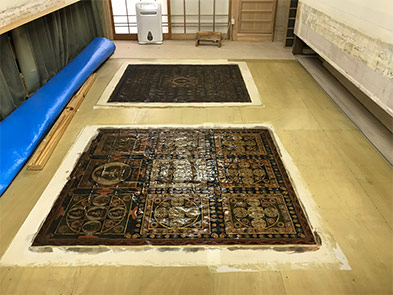

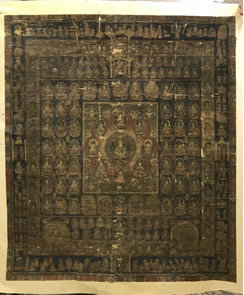
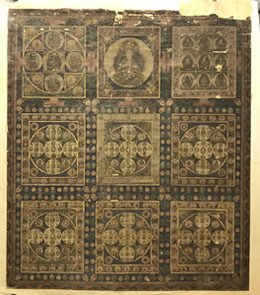
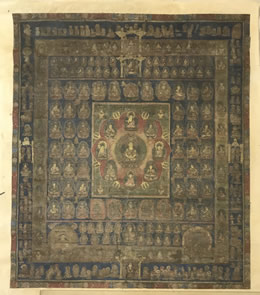
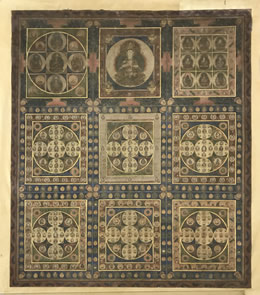


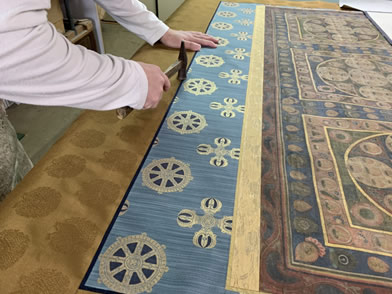
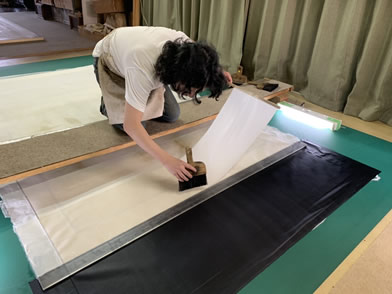
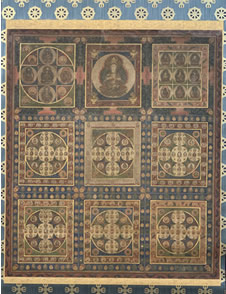
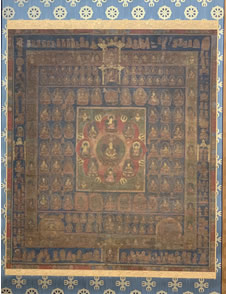
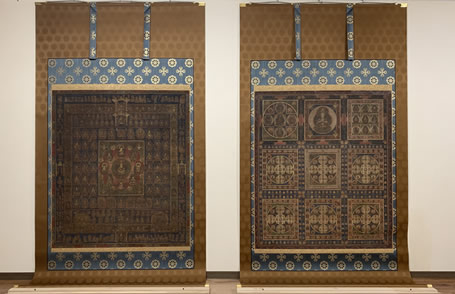
「修復」例
''「修復」例'
- 症状
- 掛け軸の「本紙の損傷」「雨染み」「本紙の折れ」
- 作業
- 欠損部分の再現、本紙の雨染み洗浄、折れの修理
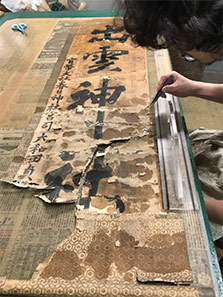
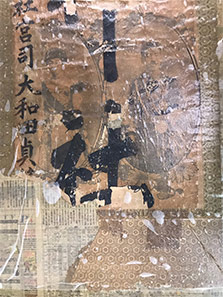
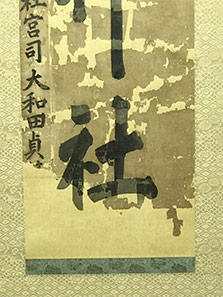

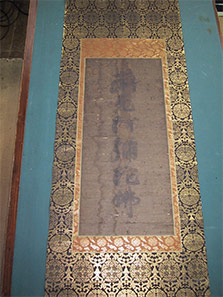
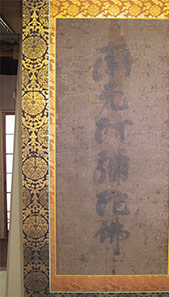
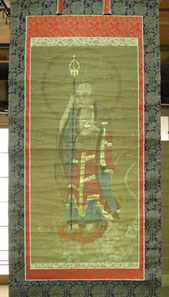
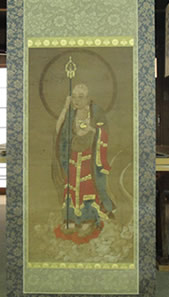
「破損本紙」
''「破損本紙」修復'
- 症状
- 掛け軸の「折れ」→「破れ」→「セロハンテープ等による修理」素人修理による弊害
- 作業
- セロハンテープなどの剥離と除去
本紙の再現(パズルのように)
本紙の薬品による洗浄


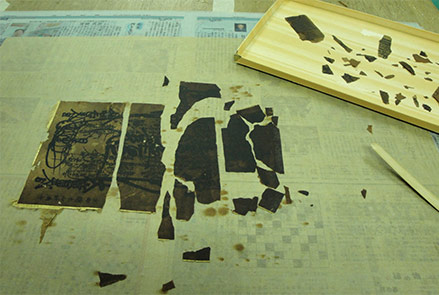
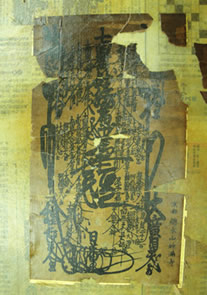

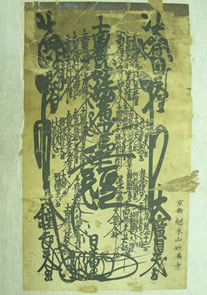
「OTHERS」
''OTHERS'
- 症状
- 「人形」「漆器」「陶器」「仏具」「着物染み抜き」など諸工芸品
- 作業
- 各工芸品の専門家による「修復」ネットワーク
